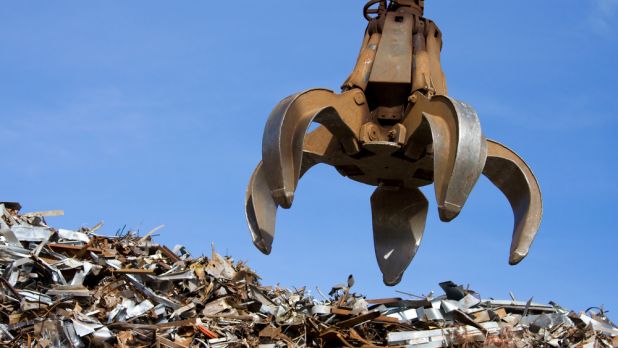Basic metals such as nickel, copper, aluminum, cast iron, bronze, brass have been and remain one of the main strategically important raw materials used in many industries.
The development of technologies for the production of composite materials and their integration into the production of metals has led to the emergence of lighter and, in some cases, stronger metal alloys. Because of this, metal producers have lost some of their customers. There is every reason to believe that the demand for the manufacture of metal products in the near future may significantly decrease, since the market offers the consumer an attractive alternative.
The trend of phasing out the use of metal structures is inevitable, including due to the growing popularity of 3D printing, which is used in the production of products from plastics and other modern polymers.
These and other factors influenced the increase in the amount of scrap metal that has been stored and stored for years (in domestic conditions and at enterprises) without the prospect of further disposal. However, participants in the metal recycling market are actively exploring this issue.
Huge funds are invested in the development of methods for monitoring the state of metal waste, consolidating information about their location and optimizing recycling. In parallel with this, specialists are looking for new directions for using recycled metallurgical waste.
The number of scrap metal recycling companies is increasing every year. Industry Global News 24 predicts that this market will grow 7.5% by 2028. If the trend continues, we can expect a decrease in the total amount of unused scrap, and therefore positive global changes in terms of reducing the negative impact on the environment of corroded metal waste.
Ferrous and non-ferrous metals market
The market of ferrous and non-ferrous metals directly depends on the state of macroeconomics. So, today the ferrous metals market is extremely unstable. According to statistics, almost half of the countries have reduced ferrous metal production (some of them - by 8-10%).
Most of the companies producing ferrous metals, including the leaders of the world market, suffer losses. The main reasons are the economic crisis, increasing competition and lower prices, accompanied by a decrease in the profitability of enterprises in this market.
But on the non-ferrous metals market, on the contrary, the situation is stable. Copper and aluminum remain the most attractive metals for investment, analysts say. Therefore, investments in non-ferrous metals are currently more promising and can bring greater profits in the long term.
State of the world metallurgical production
Over the past twenty years, the production of metallurgical products in the world has increased significantly. According to the World Steel Association (WSA), 1,829 million tons of steel were smelted in the world in 2020. This is 0.9% less than in 2019. This downturn was the first in the industry since 2015. It should be noted that today, 57.5% of the total production is in China. In the USA, for the period from January to November 2020, smelting decreased by 17.9%, in Japan - by 17.3%, in South Korea - by 7.2%, in India - by 12.3%. At the same time, China increased production by 5.5%, Turkey - by 4.9%, but Vietnam became the leader in this indicator - 43.6%.
The largest steel producers from among the CIS countries at the end of 2020 are Russia (73.4 million tons), Ukraine (20.616) and Kazakhstan (4.003).
Stainless steel production declined for the first time in 6 years in all countries of the world except China and Indonesia, which were able to increase production (by 2.5% and 15.5%, respectively, in 2020) despite the Covid-19 pandemic, as domestic demand recovered quickly, with strong government support. So, China in 2020 released a record 1.052 billion. tons of steel.
Moreover, in mid-February 2021, member enterprises of the China Iron and Steel Industry Association (CISA) increased their daily steel production to the “space” level - 2.282 million tons per day. This is 24% more compared to the same period last year (APPD).
The daily production of pig iron in the same period increased by 17% compared to the same period, reaching 2.021 million tons, the production of finished rolled steel - by 5.1%, reaching 2.121 million tons, which is 25.3% more compared to the previous year.
In addition, according to the analytical portal INFOLOM, this country accounts for about 37.5% of the world scrap collection. Judging by these indicators, China has overtaken the recognized market leader - Turkey, which has confidently maintained its position for 10 years. Not so long ago, in 2019, its share in the global scrap market was about 20%. As you can see, today China is the sole world leader in the production, consumption and processing of metal. By m





